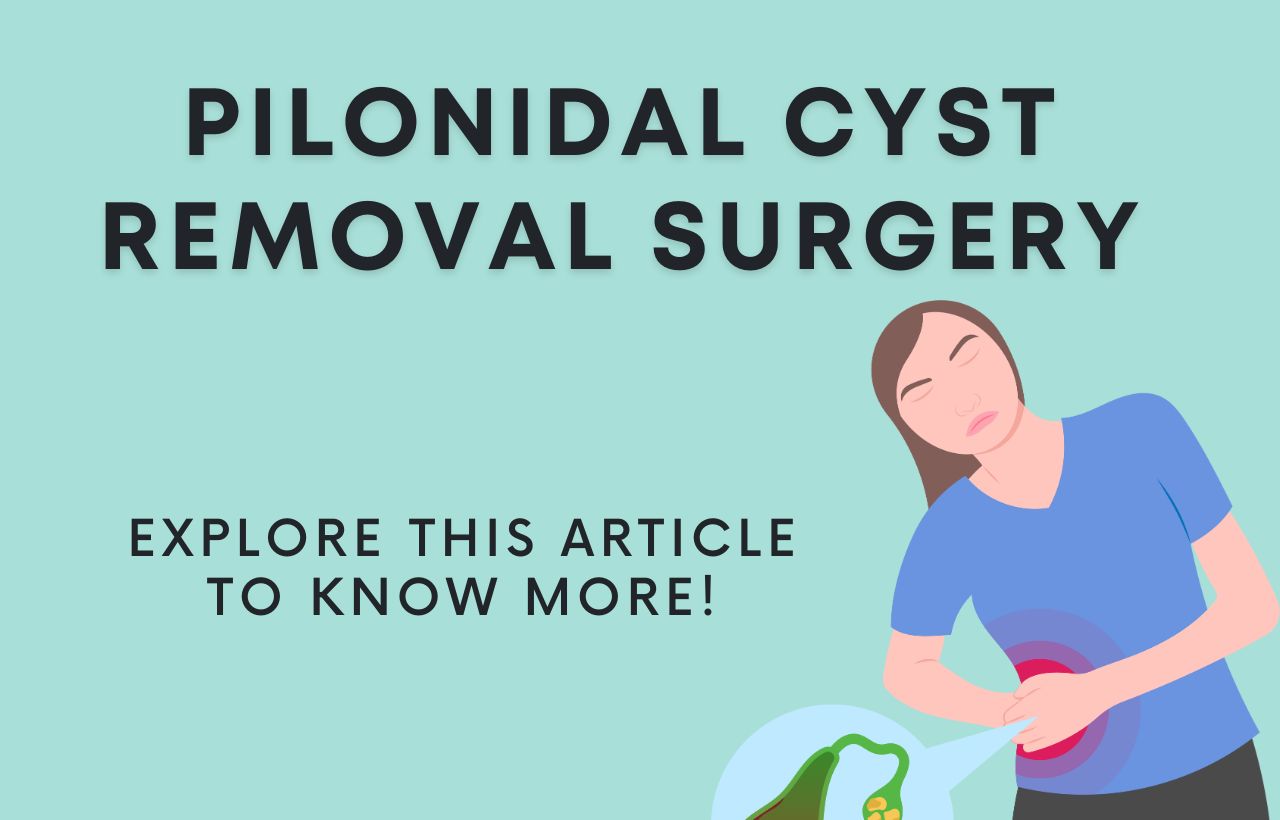Coping with a pilonidal cyst can be a challenging experience. The otherwise benign pimple at the end of the tailbone can be a source of extreme pain and discomfort. The inconvenience can hinder day-to-day activities. While pilonidal cyst removal surgery is one of the sought-after treatment methods to get rid of the painful growth, it brings in its wake certain post-operative guidelines that must be followed carefully. Taking such precautions not only reduces the risk of relapse but also promotes speedy healing. No wonder the role of family and caregivers is crucial in providing both emotional and physical support during this critical phase of recovery.
Understanding Pilonidal Cyst
A pilonidal cyst is an unwanted growth that starts inside a hair follicle. The ingrowth of the hair under the skin slowly worsens to accumulate skin debris and subsequently turn infectious. It typically develops near the cleft of the buttocks and can get extremely painful. Activities like walking and sitting exacerbate the discomfort, making day-to-day activities difficult and challenging. Men are at a higher risk of developing pilonidal cysts as compared to women. Depending upon the severity of the condition, the line of treatment includes gentle incision and drainage to more advanced pilonidal surgery.
How To Prepare For A Pilonidal Cyst Surgery?
If the non-surgical ways fail to give way, the colorectal surgeon will recommend surgical removal of the pilonidal cyst. The doctor will apprise you about the medical procedure to be undertaken and the post-surgery complications that may arise. Therefore, all entities – the doctor, patient, and the family/caregiver need to work in tandem through this journey.
Role Of Family and Caregivers
The downtime or the healing phase after a pilonidal cyst removal surgery can be different for different patients. Depending upon the type of surgery opted for – open wound or closed wound, the pilonidal cyst removal surgery recovery time will vary. If your loved one is undergoing the procedure, the journey from initial diagnosis to complete recovery will require a significant amount of support, compassion, and understanding. Here’s how one can help their loved ones navigate through this period of dependency and vulnerability.
Emotional Support – Going through the pain and discomfort from the pilonidal cyst can be extremely taxing both for the body and mind. The surgical route to well-being itself adds to fears, anxiety, and frustration. As a family member or caregiver to a patient undergoing the procedure your primary role is to provide a supportive and empathetic presence. Lending a listening ear, offering words of encouragement, and reassuring them of a speedy recovery will help them stay motivated.
Financial Support – While the pilonidal cyst removal surgery cost is often covered under insurance, there is always a need for financial support. Furthermore, the complete recovery time may last up to four months. This necessitates the need for regular inflows of money during this phase. It is always a good idea to provide financial support to ease the burden of day-to-day activities.
Physical Support – Following pilonidal cyst surgery, one of the key requirements will be physical assistance. From everyday tasks such as bathing, dressing of wounds, and helping in medication, to additional support with activities like household management and running errands; a helping hand on every front is welcome. Being generally upbeat about the situation adds to the comfort levels and expedites the recovery process.
Encourage Healthy Habits – A healthy diet and good lifestyle habits play a significant role in promoting the healing process. Encouraging the patient to follow the healthcare provider’s recommendations is the key. This includes diligently following all aspects of post-operative care like diet, wound care, hygiene practices, and physical activity. Make sure that you help them make nutritious food choices, stay hydrated, and get adequate rest to ensure faster recovery.
Final Thoughts
Life is a long journey. It is wonderful when one is healthy and independent. The challenge arises when a medical condition renders a person incapable of performing their daily chores. A pilonidal cyst may lead to such issues. The surgical removal of the cyst from the coccyx area may be slightly more debilitating due to its unpleasant location. Normal activities like moving around, sitting, or lying down can be painstaking. Thus, the role of a family member or a caregiver during the initial phase post-surgery cannot be underscored. Supporting your loved ones through pilonidal cyst surgery with a great deal of understanding, compassion, and physical support will improve patient outcomes. Recovery from pilonidal cyst surgery can be a lengthy and challenging process, often requiring several weeks or even months for full healing. Thus, by simply following the post-operative guidelines listed by the surgeon, one can put their loved one on a smooth road to recovery.
In such situations, the expertise and experience of Allen Kamrava MD MBA come in handy. A leading colorectal surgeon at one of the top-rated centers for pilonidal cyst removal surgery, he is reckoned for his invaluable guidance, assurance, and precision in helping patients and their families navigate through the complexities of the procedure with ease. The comprehensive post-operative care manual and well-structured follow-up plans make post-surgery care easy. This ensures faster recovery with improved patient outcomes. If you or your loved one is suffering from a painful pilonidal cyst, schedule your consultation with Dr. Kamrava today.


